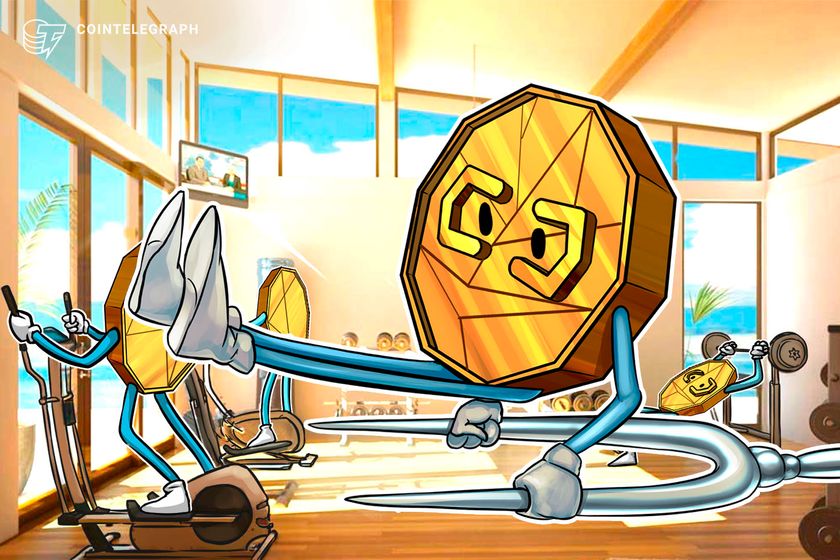
The multi-month pullback in crypto prices are giving veteran investors flashbacks of the 2018 crypto winter. Here are 5 things investors can do to survive a bear market.
The cryptocurrency market has an interesting way of catching even the most seasoned veterans off guard as each bull and bear market initially shows similarities to previous cycles only to veer off in an unexpected direction and wipe out the fortunes of newly minted crypto millionaires.
This was the case with the weak close of 2021 which completely went against the bullish $100,000 BTC price estimates that crypto analysts and influencers were peddling nonstop.
Currently, Bitcoin price is more than 50% away from its $69,000 all-time high and altcoins have fared worse, with many down more than 60% in the last 2 months. In times like these, traders need to regroup and re-evaluate their investment strategy, rather than just buying every price dip.
Here are five strategies traders can use to survive an unexpected crypto winter and retain as much value in one’s portfolio as possible.
Reduce exposure to highly volatile altcoins
Once a widespread market downturn commences, the first step to take is to reevaluate current positions and reduce exposure to the most volatile assets.
Oftentimes these are new projects that have come out of the trending sectors of the crypto market such as meme coins, NFTs or rebase projects like Wonderland (TIME), because many of the token holders are new to the community and not long term investor like the user bases for more established projects.
$TIME to pack it up. pic.twitter.com/hJI3jB6eU0
— humble defi farmer (@PaikCapital) January 25, 2022
A good way to begin the evaluation process is by looking at a project’s GitHub account to see the level of activity and the number of developers dedicated to building out the protocol.
If there is hardly any development despite flashy marketing gimmicks and big promises, the project may be one an investor should cut when the market begins to lose momentum.
Traders could then put these funds in stablecoins that can be staked to earn yield or buy future market dips.
Dollar-cost averaging
Dollar-cost averaging (DCA) is the process of buying an asset in tranches over time to average out the price paid and account for volatility-induced changes in price.
There's a reason that bitcoiners have the most aggressive dollar-cost-averaging community.
— Lyn Alden (@LynAldenContact) January 31, 2022
They correctly identify work and true scarcity, and understand it. It's hard to rival that force and utility of something that *can't* be increased in supply.
While DCA strategy is a good way to increase exposure to fundamentally sound projects over time, it is usually best to wait until after the dust has settled somewhat and a period of consolidation has commenced.
The focus of dollar-cost averaging should be on projects that have active development, engaged communities and a roadmap that lays out how the project will continue to grow and remain viable in the future.
Staking
Staking is perhaps the simplest way to increase the value of a portfolio long-term and it removes the pressure of obsessing over daily price fluctuations since the staked asset is continuing to accrue tokens.
Most layer-one protocols offer the ability to stake their native token on the network to earn a yield, including Solana, Cardano, Polygon and Avalanche.
⚡️Top Projects by Total Staked Value
— CryptoDep (@Crypto_Dep) January 25, 2022
25 January 2022$SOL $ADA $ETH $LUNA $AVAX $DOT $BNB $ATOM $ICP $NEAR $MATIC $FTM $XTZ $ALGO $CAKE pic.twitter.com/X9IgsonWKr
Ether holders can also stake their tokens on the beacon chain for Eth2, but it’s important to note that staking rewards will not be able to be claimed until Eth2 is fully launched.
There are many other staking options out there from gaming protocols like Axie Infinity and Illuvium to NFT marketplaces like LooksRare, so once a deep dive has been made and fundamentally sound projects are chosen, staking becomes a matter of setting it and forgetting it.
Find projects with growing ecosystems and perks
Projects that help token holders earn via staking, liquid staking, borrowing and airdrops are also worth considering when the market turns bearish.
Staking is the simplest form of this as the number of tokens increases over time, but other options include token launchpads, NFT marketplaces and protocols known for offering airdrops to community members.
One example of a protocol where early adopters are being rewarded is the Cosmos (ATOM) network and its growing community of projects connected via the Interblockchain Communication Protocol (IBC).
Best site to keep track of @Cosmos Airdrops https://t.co/XzOOIb5TAG
— Cryptocito | YouTuber ⚛️ (@Cryptocito) January 26, 2022
Builders: submit your upcoming airdrop on that site if you want to increase awareness.@CosmosUplink pic.twitter.com/IPoDqZ8ymp
ATOM stakers and those who have engaged with the Osmosis (OSMO) decentralized exchange have been rewarded with a long list of airdrops from projects launching within the ecosystem as a way to help bootstrap activity within their communities.
Invest in yourself
One of the most personally beneficial things an investor can do during a down market is to invest in themselves by learning something new.
Not only will this help investors to avoid the urge to sell and miss out on future gains, but it can also lead to new avenues to build wealth.
Level up and invest in yourself:
— Wealthy Tree (@WealthyTree) February 1, 2022
- read more books
- work out well more often
- spend time with family and friends
- take a course and learn a new skill
- invest in a hobby to share w/others
You get out of life what you put into it.
Find your values and invest in them.
Despite the market downturn, cryptocurrencies continue to advance along the path to mass adoption and the number of jobs in the blockchain sector is only going to increase moving forward.
Whether it’s learning to program in Solidity, experimenting with graphic and digital design to create a new line of NFTs or just doing research to gain a deeper understanding of the various sectors of the market.
Ultimately, the key to surviving a bear market is staying positive and being patient.
Want more information about trading and investing in crypto markets?
- Crypto staking: How to pick the best staking coins for passive income
- Web3 innovations are replacing middlemen with middleware protocols
- How to pick or analyze altcoins?
- Inside the blockchain developers’ mind: How to build the next big social DApp
- How can the Metaverse help the food industry?
The views and opinions expressed here are solely those of the author and do not necessarily reflect the views of Cointelegraph.com. Every investment and trading move involves risk, you should conduct your own research when making a decision.










